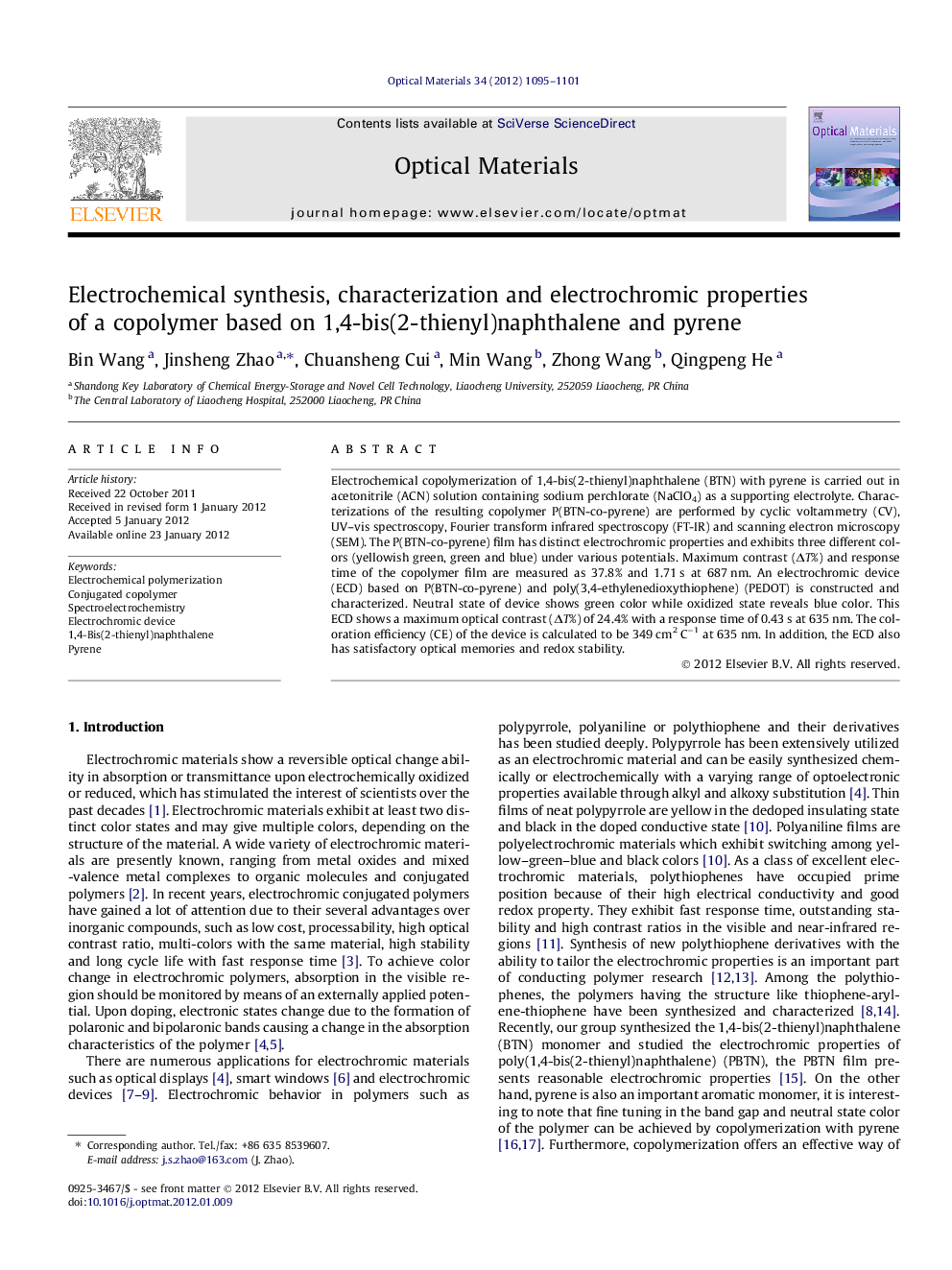| Article ID | Journal | Published Year | Pages | File Type |
|---|---|---|---|---|
| 1495819 | Optical Materials | 2012 | 7 Pages |
Electrochemical copolymerization of 1,4-bis(2-thienyl)naphthalene (BTN) with pyrene is carried out in acetonitrile (ACN) solution containing sodium perchlorate (NaClO4) as a supporting electrolyte. Characterizations of the resulting copolymer P(BTN-co-pyrene) are performed by cyclic voltammetry (CV), UV–vis spectroscopy, Fourier transform infrared spectroscopy (FT-IR) and scanning electron microscopy (SEM). The P(BTN-co-pyrene) film has distinct electrochromic properties and exhibits three different colors (yellowish green, green and blue) under various potentials. Maximum contrast (ΔT%) and response time of the copolymer film are measured as 37.8% and 1.71 s at 687 nm. An electrochromic device (ECD) based on P(BTN-co-pyrene) and poly(3,4-ethylenedioxythiophene) (PEDOT) is constructed and characterized. Neutral state of device shows green color while oxidized state reveals blue color. This ECD shows a maximum optical contrast (ΔT%) of 24.4% with a response time of 0.43 s at 635 nm. The coloration efficiency (CE) of the device is calculated to be 349 cm2 C−1 at 635 nm. In addition, the ECD also has satisfactory optical memories and redox stability.
Graphical abstractThis figure shows spectroelectrochemical spectra of the P(BTN-co-pyrene) film on ITO electrode as applied potentials between 0 V and 1.30 V.Figure optionsDownload full-size imageDownload high-quality image (166 K)Download as PowerPoint slideHighlights► A copolymer based on 1,4-bis(2-thienyl)-naphthalene and pyrene was electrochemically synthesized. ► The obtained copolymer film exhibits three different colors under various voltages. ► The neutral green dual type electrochromic device based on the resulting copolymer and PEDOT was obtained.
